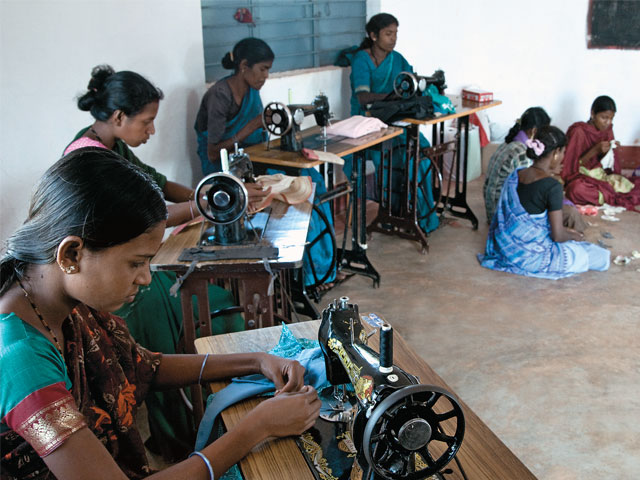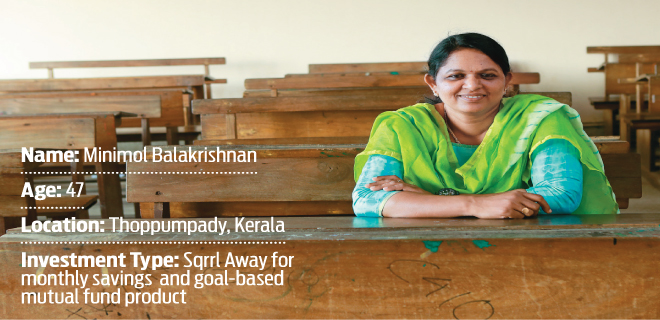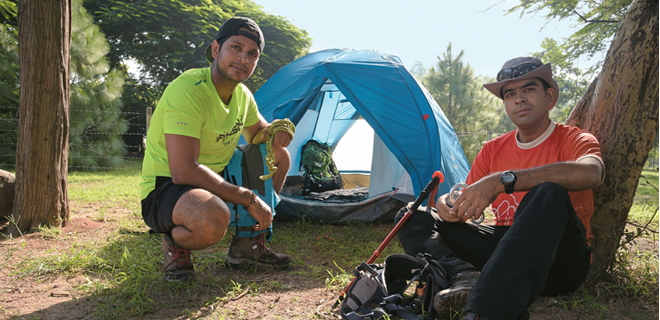Level the playing field
It’s a pity that women find it difficult to get loans to start a business

By Aparajita Agrawal
I want to start with a disclaimer: I am not a feminist and I, for the most part, do not support special treatment being meted out on the basis of caste, creed, social status or gender. In my career of about a decade and a half, I have operated at the intersection of business and development and making the two ends of the spectrum come closer. This is tough enough in our routine work of championing for socially relevant businesses and enterprises, or helping the first generation entrepreneurs succeed and become investible so that they can scale their social impact alongside enterprise profitability. Now imagine championing this mandate for (first-time) women entrepreneurs in a country where the operating environment for small businesses is neither friendly nor the support ecosystem evolved enough to cater to this sub-group of entrepreneurs. Sample this fact—In India, women-owned SMEs have a 250 per cent higher chance of getting rejected for a bank loan as compared to men-owned SMEs. There is no single reason for this skewed statistic but several factors that contribute. These include factors such as lack of assets, security, or collateral owned by women business owners, a near hostile operating environment for women entrepreneurs, especially in sectors that have been traditionally male-dominated such as manufacturing and heavy industries or those that work very closely with the government- sector and even the very fact that there are not enough successful precedents that allow financial institutions to have comfort in banking on women entrepreneurs.
On the other hand, if you were to pick up a sample from the microfinance sector, the statistics are near opposite. Women are considered to be the most bankable, more entrepreneurial and clearly much ahead of their male peers. Women are not just bankable and credit-worthy, but are 250 per cent more likely to return loans and there is almost a 95 per cent chance that the loan will be appropriately utilised and will be used for productive or lifeimproving purposes. So, why this dichotomy and more importantly how do we ensure that what is an established fact with the bottom of the economic pyramid strata women extend even to the organised SME and business segment? So here’s my 5-point priority list of what I think needs to be set right for women entrepreneurs to get a level playing field in India.
Comprehensive support ecosystem for women entrepreneurs
As a country we should be concerned about not churning out enough women entrepreneurs. We should be worried about the high rate of mortality of women-owned or women-operated businesses. We need to drive a joint agenda between public and private stakeholders to ensure that there is an adequate support ecosystem for women entrepreneurs. This includes building aspiration and role models for girls in formative years to being entrepreneurs and business owners; creating safe and women- friendly environment and incubators for training women entrepreneurs and nurturing businesses; building peer networks that are gender friendly and finally investing more towards business and financial training for more women entrepreneurs. I, my institution and our network of partner organisations stands firmly behind making this a mainstream agenda. At Intellecap, we convene SANKALP SUMMIT, one of the largest convenings in this side of the world, focused on inclusive development, entrepreneurship and impact investing and have committed to bringing the dialogue and commitments around this to the main-stage.

Role models, peer group
I cannot emphasise this point enough. As the only child with a reasonably privileged upbringing, it is still tough for me to remember business-women that I looked up to while growing up. In fact, owning or running a business was never a high priority in the list of career options primarily because service sector seemed to be one that was considered more apt and secure for women, in the long term. Times have changed, there are definitely a lot many more examples and role models to look towards especially when it comes to women in leadership positions in large corporate and institutions, politics even. Cannot say the same for micro-, small- or medium-enterprises, and we need to rectify this quickly. Equally important is the role of peer group for women entrepreneurs in the making.
Dedicated financing facilities for women entrepreneurs
No woman entrepreneur worth her while asks for special concessions especially in the business space, however, almost all of them ask to not be discriminated against. With loan rejection statistics as high as what I mentioned earlier, we are clearly dealing with a deep-seated bias here. There is no scientific or logical explanation that will point to a higher degree of failure of women owned business over those owned by our male counterparts. Clearly the challenge is somewhere else—either a bias or a genuine lack of investment or financing- ready businesses run by women.
If it is the latter, and I believe that is so, the need for establishing better ecosystems becomes even more acute. Our own experience at Intellecap, where we are currently working on setting up an Access to Finance (A2F) platform for women SMEs stems from this belief and the fact that the gap between formal financing facilities and women entrepreneurs needs to be bridged fast. Insufficient control over finances, collateral Thanks to deep-seated social and cultural biases prevalent in India, it is no surprise that one of the reasons banks have trouble lending to women is the lack of property, collateral or assets in their name. While the percentage of women who own property and manage their own finances is on the rise, it is still largely an urban, career-women phenomenon. Many women entrepreneurs, especially the first generation ones, struggle tremendously with the lack of total independence over their finances or having property and asset titles to their name. And while I mention this, let me also add that even the number of women investors is woefully low. There are some initiatives such as women-focused banks and women-focused funds that are setting some early examples, but the road is still a less travelled one.
Bridge the demand and supply gap
Women are good investments; we know that from experience and precedence. Investing in women makes for investing in households, communities even. I would very much extend that logic and say that the same goes, and should go, for investing in women entrepreneurs. It’s a myth that women do not understand finances, a myth that they can’t manage business as effortlessly as home or kids. It’s also a myth that there is not a robust enough demand-side pipeline of women-owned businesses qualifying for financing or investments. In fact, I would argue that the challenge is on the supply side of financing. The players are few, the financing instruments too traditional and too rigid, the mindset needed amongst the powers-that-be approving credit is often found wanting and there is almost complete lack of committing to women entrepreneurs as a priority segment (which it needs to be categorized as). Some of this can be rectified through minor policy tweaks, others by simply being more cognizant of the fact that women enterprises can perform at par, if not better than men-owned ones. Finally, the quote from Desmond Tutu, I think sums it up really well and should be the adage to abide by, "If we are going to see real development in the world then our best investment is women.”









